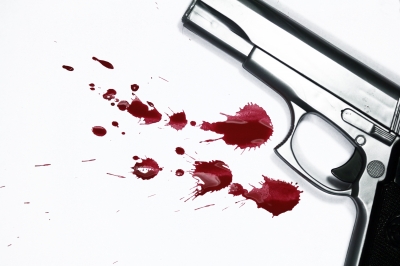 In many areas of Jamaica, interpersonal aggression and societal violence are commonplace. Such is the state of affairs that Jamaica has earned the unfavourable reputation of being one of the most violent countries in the world (Hickling, 2008). The staggering statistics attest to this fact. In the year 2000, Jamaica ranked third in the world in murders per capita and in 2005, the annual rate of homicide was more than three times the global average (World Bank, 2007, cited in Smith & Green, 2007). A troubling fact is that many of these homicides, along with other crimes, are being perpetrated by adolescents, especially males. It was reported, for example, that in 2002, 80% of the violent crimes, 75% of the murders and 98% of all major crimes committed in the country were carried out by males between the ages of 15 and 29 (World Bank, 2003, cited in Smith & Green, 2007). In Jamaica therefore, as in many other countries, aggression, or at least overt aggression, is more prevalent among males than females. [showmyads]
In many areas of Jamaica, interpersonal aggression and societal violence are commonplace. Such is the state of affairs that Jamaica has earned the unfavourable reputation of being one of the most violent countries in the world (Hickling, 2008). The staggering statistics attest to this fact. In the year 2000, Jamaica ranked third in the world in murders per capita and in 2005, the annual rate of homicide was more than three times the global average (World Bank, 2007, cited in Smith & Green, 2007). A troubling fact is that many of these homicides, along with other crimes, are being perpetrated by adolescents, especially males. It was reported, for example, that in 2002, 80% of the violent crimes, 75% of the murders and 98% of all major crimes committed in the country were carried out by males between the ages of 15 and 29 (World Bank, 2003, cited in Smith & Green, 2007). In Jamaica therefore, as in many other countries, aggression, or at least overt aggression, is more prevalent among males than females. [showmyads]
The rise in reports of violence in Jamaican schools is another indication of the pervasiveness of this problem. Institutions that should serve as havens for learning are often transformed into battle fields as societal violence and acts of aggression penetrate the school system. Presently, not only are students being victimized by fellow students but teachers also regularly find themselves at the receiving end of their students’ aggressive blows and threats.
Aggression and violence are major social and public health concerns affecting every sector and strata of Jamaican society and seriously taxing the country’s resources. Death, injuries, disabilities and public distress are some of the more readily identifiable effects of violence but it also impedes social, economic and educational development (Smith & Green, 2007). Aggression and the resulting violence hinder local and foreign investments, reduce employment opportunities, disrupt the educational system and plunge citizens into a mire of fear and anguish (Brown, 2005, cited in Smith & Green, 2007). There is therefore a pressing need for more attention to be directed toward reducing aggression, especially among Jamaican adolescents who are often the perpetrators, as well as the victims, of aggressive acts.
References
Hickling, A. (2008). Jamaicans unite for peace. Retrieved February 12, 2009, from http://www.unicef.org/jamaica/violence_11469.htm
Smith, D. E., & Green, K. E. (2007). Violence among youth inJamaica: A growing public health risk and challenge. Pan American Journal of Public Health, 22 (6), 417-424.
Photo courtesy of Simon Howden / FreeDigitalPhotos.net
Related articles
- Yoga for a Peaceful Jamaica. (elephantjournal.com)
- Jamaicans hit the streets to protest crime and violence (caribbean360.com)
- Foster Care in Jamaica (lawprofessors.typepad.com)


